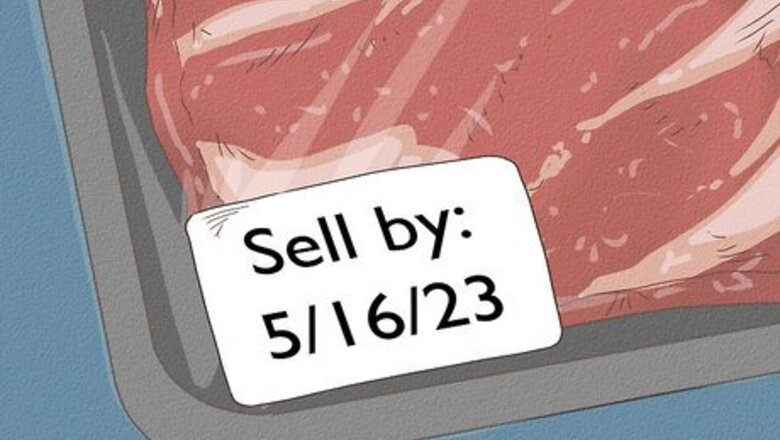
views
- Toss steaks out if they’re passed their use-by date or have been in your fridge for longer than 4–5 days.
- Check raw steaks for a slimy or sticky texture, foul odors, discoloration, and dry, juiceless meat.
- Get rid of frozen steaks that are older than 12 months or have tough, discolored sections of freezer burn.
Raw Steak
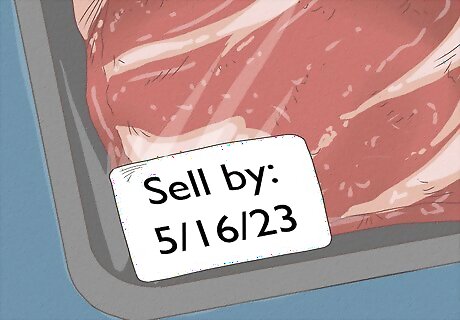
See if the use-by date has passed. Check the date on the steak’s packaging to see if they list a use-by date or a sell-by date. If the printed use-by date has already passed, don’t risk cooking up your steak since it may have started spoiling and have bacteria on it. If your steak has a sell-by date, you’re usually safe to cook the steak 3–5 days after the listed date.
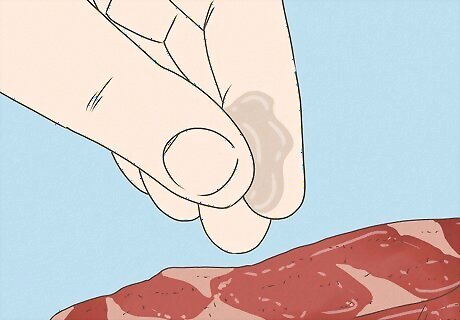
Feel if the steak has a sticky or slimy coating. Run your finger over the surface of your steak. If your steak is still good, it shouldn’t have any residue or coating on the surface. Once spoilage starts and bacteria forms on the meat, the surface may feel sticky or slippery to the touch. Be sure to wash your hands after handling raw meat so you don’t spread any foodborne illnesses or bacteria.

Look for a dull, gray color on the meat. When you look at your steak, check if discoloration has spread across all of the meat. While it’s okay for a little discoloration to form around the edges of your meat, your steak may have spoiled if it has a consistent gray color. As red meat is exposed to oxygen, the protein starts to break down and change colors. Dry-aged steak may have a discolored outer layer from the aging process. During dry-aging, the meat is left in a temperature- and humidity-controlled room to tenderize the meat.
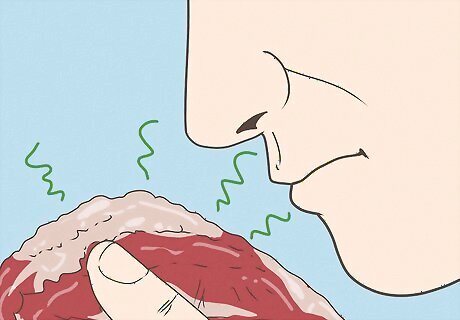
Check for a sour, off-putting odor. When you open your steak, give it a quick sniff test. If you don’t smell any strong odors, your meat is still fresh and safe to cook. If you notice a sour or rancid smell coming from the meat, throw it in the trash. If your steak is slightly discolored but doesn’t have an odor, then it’s still safe to cook. If you bought dry-aged beef or steak, it may have a slight odor from the aging process.

Test if the meat feels dry. Check if your steak looks shriveled or feels dry when you break it apart, which are signs that the meat is old and starting to spoil. Since the steak won’t be as flavorful and is more likely to have harmful bacteria, throw the meat away.
Frozen Steak
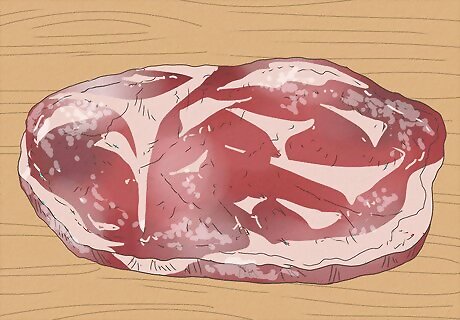
Check for tough grayish spots of freezer burn. Open your steaks and check their quality while they’re still frozen or after defrost them. If there are large areas that feel tough or look discolored, then those areas have freezer burn. While freezer burn is safe to eat, it may give your steak a stale flavor or tougher texture so it’s best to throw it away.
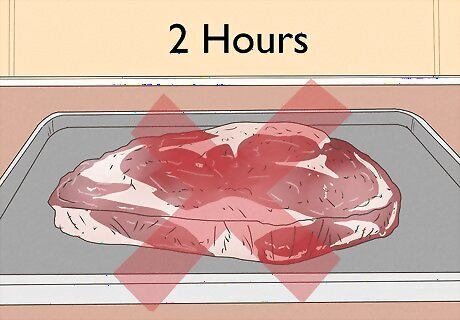
Get rid of steaks that were left out in temperatures above 40 °F (4 °C). Frozen steak starts to spoil if you leave it out for 2 hours or longer. If you leave the meat at room temperature and forget to cook or put it away within the timeframe, then toss the steak out instead of refreezing it. It's still safe to move your steaks from your freezer to your fridge to defrost since they'll stay below temperature. Bacteria starts growing on steak when it sits at temperatures above 40 °F (4 °C) and refreezing it won’t prevent spoilage.

Toss steaks if they’re older than 12 months. Even though steaks can keep indefinitely in the freezer, they start to lose their flavor and texture after about a year. Check if you wrote the date you froze the steaks on the packaging, and throw away any that have been in your freezer for 12 months or longer.
Cooked Steak
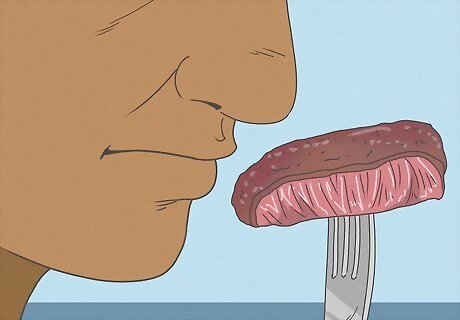
Toss cooked steak if it has a sour smell. Open your leftover steak and give it a quick sniff. When the meat is still good to eat, it should still smell fresh. If you notice there’s a sour or pungent tinge to the odor, then be safe and throw the steak in the trash.

Check cooked steak for a slimy or fuzzy texture. Look at the steak to check if it has any white or green fuzz on the surface, which are signs of mold and spoilage. If the steak doesn’t have a fuzzy texture, touch it with your finger to check if it feels slimy, which means bacteria is growing on the surface. If the meat feels dry or looks the same as when you first cooked it, then it’s safe to eat.
How long is steak good in the fridge?
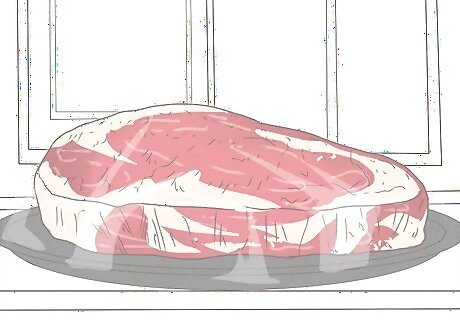
Raw steak stays good for about 3–5 days in your fridge. As long as your steak stays below 40 °F (4 °C) in your fridge, your steak will stay fresh for a few days after you buy it. If your steak has been in your fridge for longer, play it safe and get rid of it to avoid foodborne illnesses. If you’re storing cooked steak in your fridge, only keep it for 3–4 days before throwing it away.
Preventing Spoilage
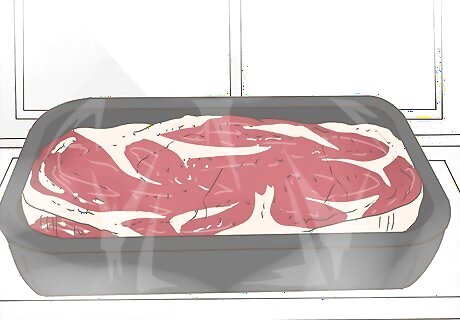
Keep steaks in their original packaging until you use them. Opening your steaks before you plan on using them exposes them to oxygen and may make them spoil faster. Keep your steaks wrapped up so they stay fresh and don’t lose any of their juices.

Freeze steaks in an airtight container. Freeze your steaks 1–2 days before the use-by date on the packaging to ensure they stay safe to eat. Either keep the steaks in their original packaging or use a vacuum sealer to make an airtight package so the meat retains its juices. Store your steaks for up to 12 months before they start to lose quality in their flavor and texture. If you plan on freezing your steaks for longer than 2 months, wrap the original packaging in heavy-duty foil, plastic wrap, or freezer paper to prevent freezer burn.
















Comments
0 comment